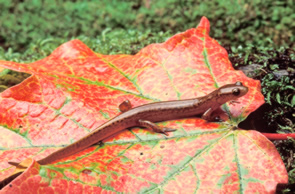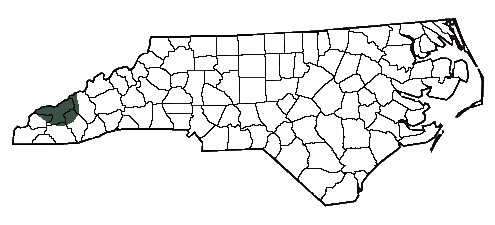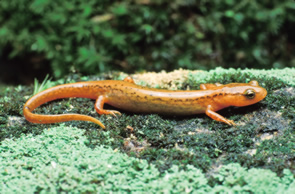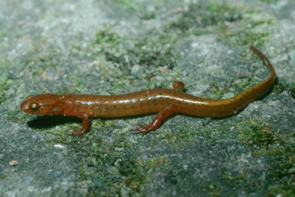
Junaluska Salamander
Eurycea junaluska
Eurycea junaluska
Photo by D Dennis
Listed: State Threatened, Federal Species of Special Concern.
Description: Overall, Junaluska salamanders may look very similar to two-lined salamanders. Unlike two-lined salamanders, Junaluska salamanders have nondiscript brown mottling on the back and sides and lack the definite dark stripes characteristic of two-lined salamanders. Junaluska salamanders also have longer legs and a shorter tail. Larval Junaluska salamanders are generally darker and stockier than larval two-lined salamanders. The overall coloration of the larvae is typically olive to brown, as opposed to the yellow or yellow-green of two-lined salamanders.
Habitat/Range: Junaluska salamanders have a very limited range in Tennessee and North Carolina. In North Carolina, the Junaluska salamander is found only in Graham County. Adults are rarely encountered but may be found in and around streams during colder months. During warmer months they probably move into the surrounding forest. Larvae are more easily found in streams but are easily confused with the more abundant larvae of the Blue Ridge two-lined salamander.
Diet: Little is known about the diet or feeding behavior of Junaluska salamanders, but they probably feed on small invertebrates within streams and the surrounding forest.
Reproduction: Junaluska salamanders lay their eggs in streams, attaching them to the undersides of rocks. Adult salamanders remain to guard the eggs. Hatchling salamanders emerge from their eggs with external gills and spend 2-3 years as fully-aquatic larvae before transforming into adults.
Miscellaneous: Junaluska salamanders appear to have always been rare in North Carolina and are very difficult to monitor. One of the three North Carolina populations is thought to have been wiped out due to human disturbance upstream.

The shaded region represents the range of the Junaluska salmander in North Carolina.



Photo by D Dennis